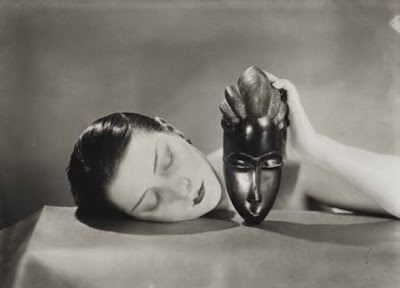Man Ray (1890-1976) was an American visual artist and photographer who played a significant role in the Dada and Surrealist movements. He is renowned for his avant-garde and experimental approach to art, incorporating various mediums such as photography, painting, sculpture, and film.
Born as Emmanuel Radnitzky on August 27, 1890, in Philadelphia, Man Ray began his artistic career as a painter. In the early 1910s, he moved to New York City and became associated with the avant-garde art scene. He soon embraced photography as his primary medium, exploring its creative possibilities beyond conventional representations.
Man Ray is known for his groundbreaking contributions to photography, particularly his exploration of unconventional techniques. He was a pioneer of the "Rayographs" or "photograms," a process that involved placing objects directly onto photographic paper and exposing them to light. This technique allowed him to create abstract and dreamlike images without the use of a camera. His Rayographs often featured everyday objects, creating a juxtaposition between the ordinary and the mysterious.
During the 1920s, Man Ray moved to Paris, where he became an active participant in the Dada and Surrealist movements. He collaborated with other influential artists of the time, including Marcel Duchamp, Jean Arp, and Salvador Dalí. His work from this period merged elements of chance, playfulness, and conceptual exploration.
Man Ray's photography was characterized by its innovative use of lighting, composition, and manipulation of images. He experimented with solarization, a technique that involved briefly exposing the photographic paper to light during the development process, resulting in distorted and surreal effects. He also explored double exposure and photomontage, creating complex and layered compositions.
In addition to his photography, Man Ray produced sculptures, objects, and installations that often incorporated found objects and everyday materials. He also worked in the realm of fashion and commercial photography, collaborating with fashion designers and publications. His artistic versatility and willingness to push the boundaries of different mediums made him a significant figure in the art world.
Man Ray's career spanned several decades, and he continued to produce art and engage in various creative endeavors until his death on November 18, 1976, in Paris. His work continues to be celebrated and exhibited worldwide, influencing generations of artists and photographers with his innovative and imaginative approach to art and photography.
Questions:
- What
were the key artistic movements with which Man Ray was associated?
- What
were some of the unconventional techniques that Man Ray pioneered in
photography?
- How
did Man Ray's Rayographs or photograms differ from traditional
photography?
- Who
were some of the notable artists with whom Man Ray collaborated during his
time in Paris?
- In
addition to photography, what other artistic mediums did Man Ray explore?
- How
did Man Ray's work reflect the principles of Dada and Surrealism?
- What
is the significance of Man Ray's "Mona Lisa with a Moustache"
artwork?
- How
did Man Ray's commercial and fashion photography contribute to his
artistic career?
- What
were some of the themes and concepts explored in Man Ray's later works?
- How
has Man Ray's legacy influenced the field of photography and contemporary
art?

